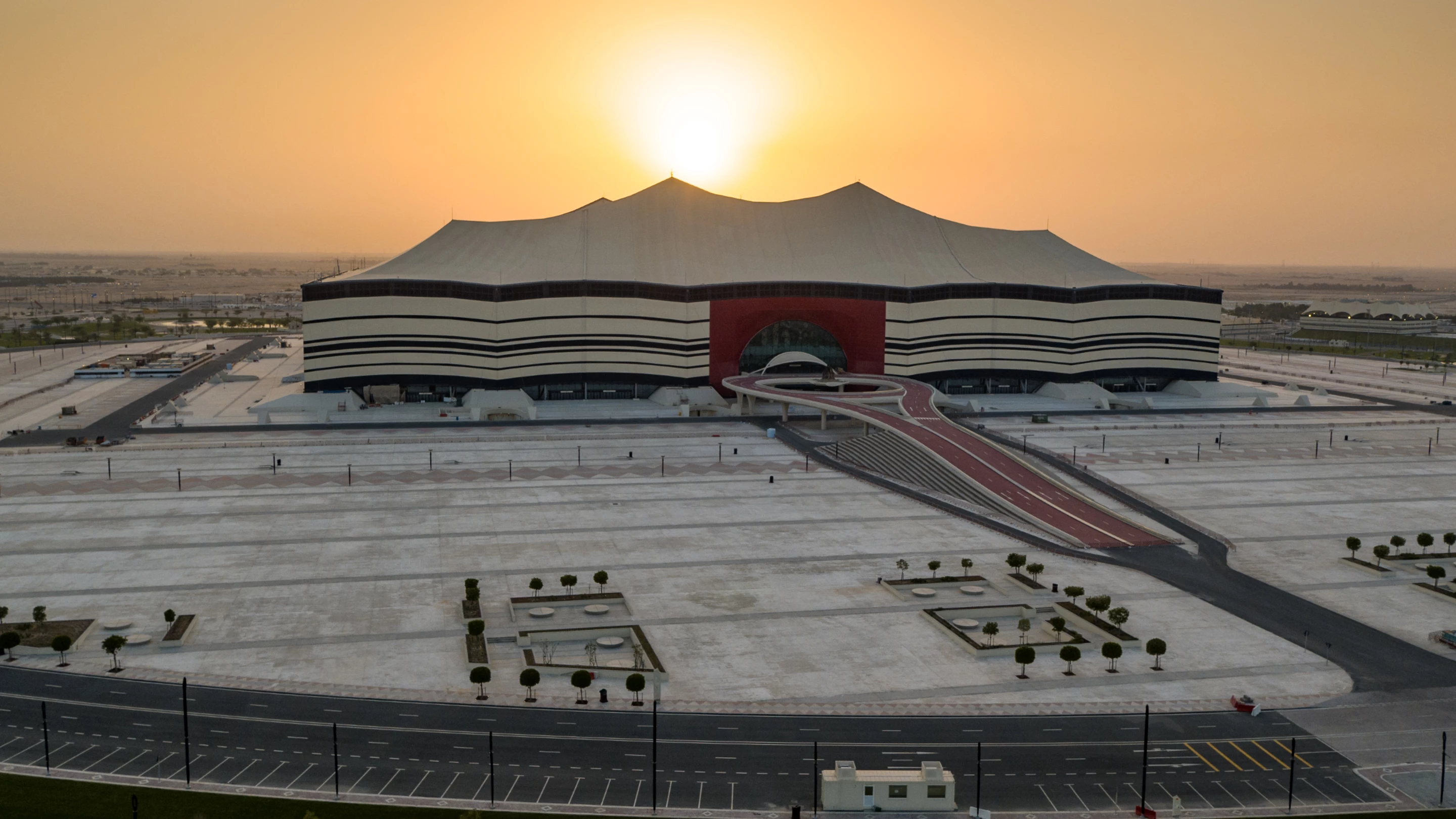Taking the overall form of a massive nomadic tent pitched in the Qatar desert landscape, the Al Bayt Stadium is yet another major stadium to be inaugurated ready for the upcoming FIFA World Cup soccer tournament being held in the country next year.
The Al Bayt Stadium, designed by Dar Al-Handasah, is located in the city of Al Khor, in northern Qatar. It's one of the World Cup's main stadiums, has a total capacity of 60,000, and will be used to host the opening game, as well as subsequent matches up to the semi-finals.
The stadium's design is inspired by the Bayt al sha'ar tent used by the nomadic people who have lived in and around Qatar's deserts for millennia, says the Qatar Supreme Committee for Delivery & Legacy, which is the body in charge of delivering the World Cup.
Its tent-like appearance comes from the use of polytetrafluoroethylene (PTFE) on its exterior, which covers a structural steel framework. The building is topped by a retractable roof, which can be open or closed as required, to help mitigate the local heat.

"Traditionally, the tents of nomadic tribes and families in Qatar could be identified by black stripes like those on the arena's distinctive exterior, and by the vibrant sadu patterns that will greet fans once inside the stadium," explains the Qatar Supreme Committee for Delivery & Legacy. "Visitors to Qatar get a taste of traditional design from the region, while local fans are reminded of their proud heritage. As well as being incredibly eye-catching, the tent design is deeply practical. The shade provided by the tent structure and its retractable roof system complement the stadium's cooling technologies, helping maintain a comfortable temperature inside without using any extra power."
Once the World Cup comes to a close, half of the stadium's seats will be removed and reused in other sporting facilities in Qatar and elsewhere. An upper area of the stadium will be turned into a 5-star hotel, while a shopping center, food court, gym and multipurpose hall are also planned to be incorporated into the main stadium building. Additionally, the stadium complex will include a sports medicine hospital, a park, running and cycling tracks, play areas, coffee shops, and restaurants.
The project follows other recent stadiums that have been inaugurated in Qatar ready for the 2022 World Cup, including the Al Thumama Stadium and the 974 Stadium.







